Gordon Huether: All In
“Ultimately, ‘All In’ is intended to reflect the precepts of Clemson’s football program: striving for excellence, individual personal growth and community service,” said Huether, noting how it represents the optimism, diversity and complexity of both the athletic department and the broader Clemson community. Artist Website: Gordon Huether
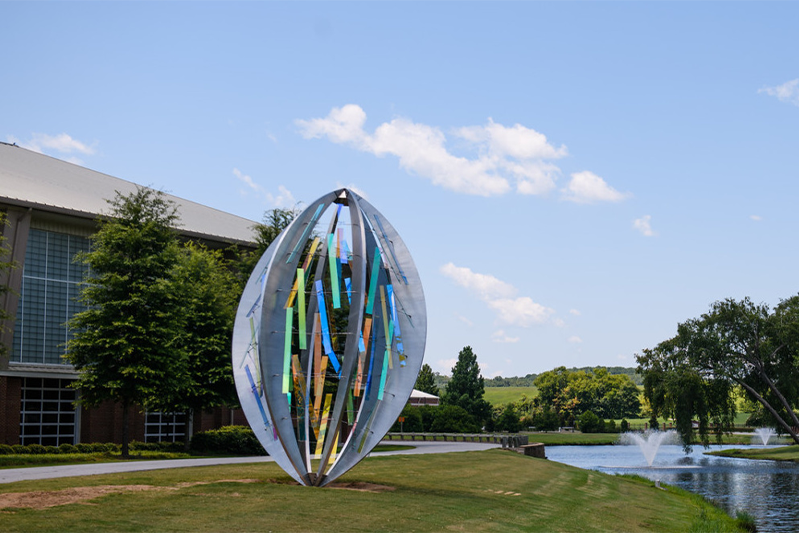
Matthew Au and Volkan Alkanoglu: Foundation
Known for experimenting with geometry and depth, Co-artists Matthew Au and Volkan Alkanoglu designed and built this piece by drawing inspiration from the Lee III building, designed by Thomas Phifer. The suspended, folded structures are inspired by the geometry of the building, while the sculpture itself is a visual and physical extension of the roof form, textures of the ceiling and walls around the space and reflective of techniques and processes utilized by students during their academic studies. Artist Website's: Matther Au & Volkan Alkanoglu
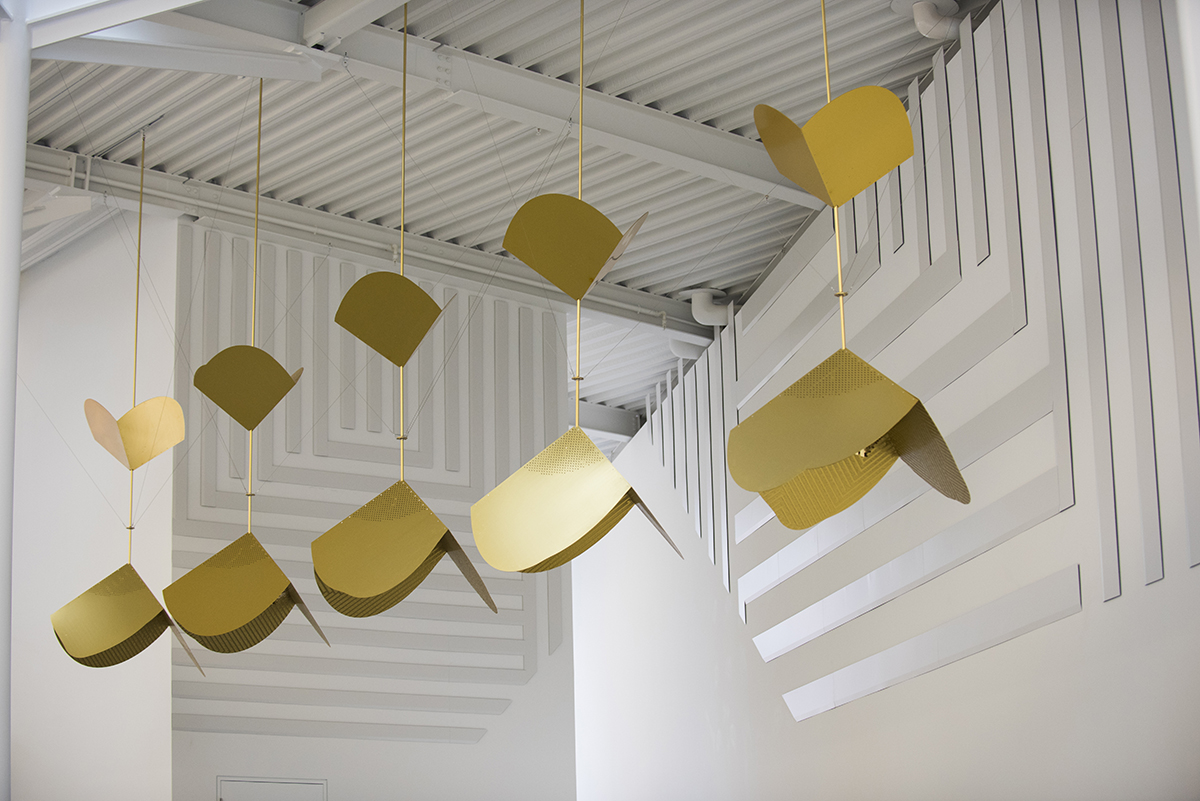
Koryn Rolstad: Illuminated Chroma Wind Trees
Koryn Rolstad’s piece, Illuminated Chroma Wind Trees, activates both the exterior and the interior of CORE Campus. Rolstad says, “the translucent colored wings integrate the ‘Chroma’ of sunset to sunrise, seasons, and integrate the University school colors for a flowing energizing and elegant spectrum experience”. Materials: Aluminum, Acrylic ©2017 Koryn Rolstad, Bannerworks Inc. (dba) Koryn Rolstad Studios Artist
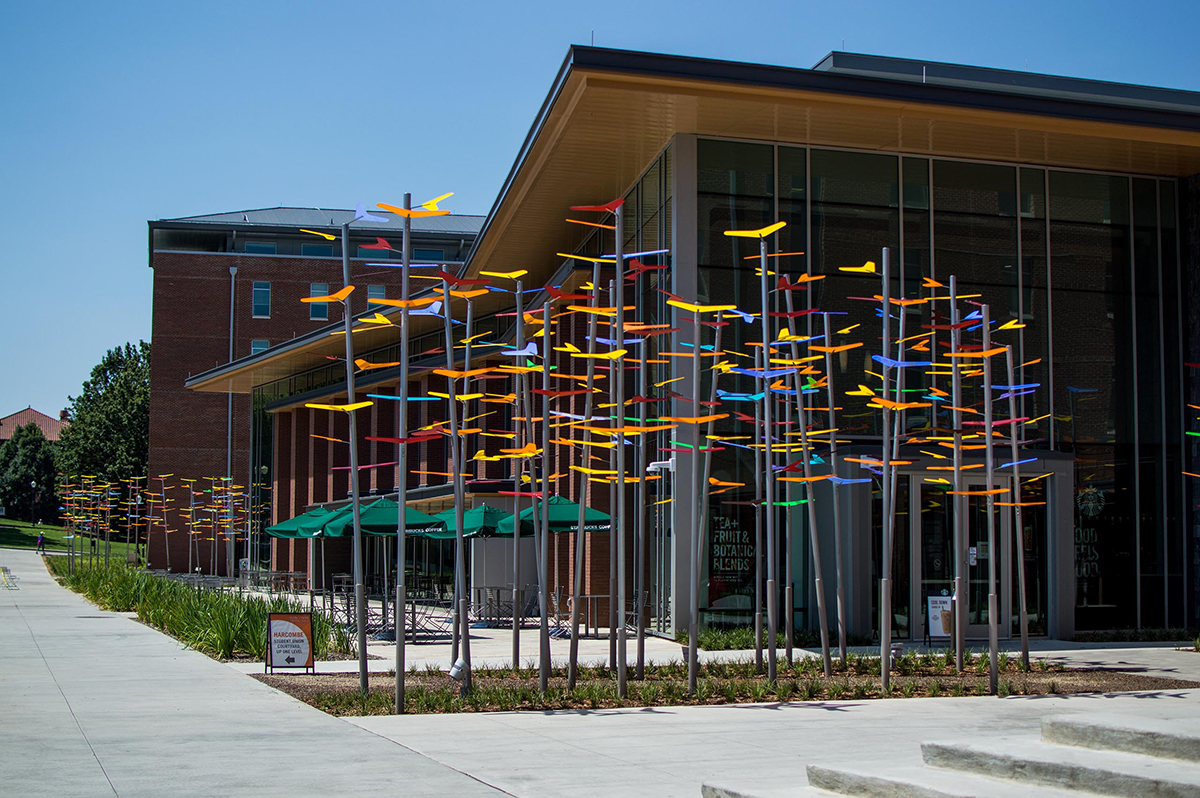
Klari Reis: The Clemson Genus Project
Klari Reis received her M.F.A. and Associate Research Fellowship from City and Guilds of London Art School in London, England. She also holds a B.A. from University of California at Davis and an A.A. from University of California at Santa Barbara. Her artwork was directly influenced by current research taking place in the facility and within the Life Science disciplines. Brilliantly colored life forms dance across the walls in this installation, comprising 600 individualized paintings embedded in petri dishes of varying sizes. The effect of the installation is a spectacular burst of color rising vertically through the expanse of the atrium of the Life Sciences Facility. Artist Website: klarireis.com
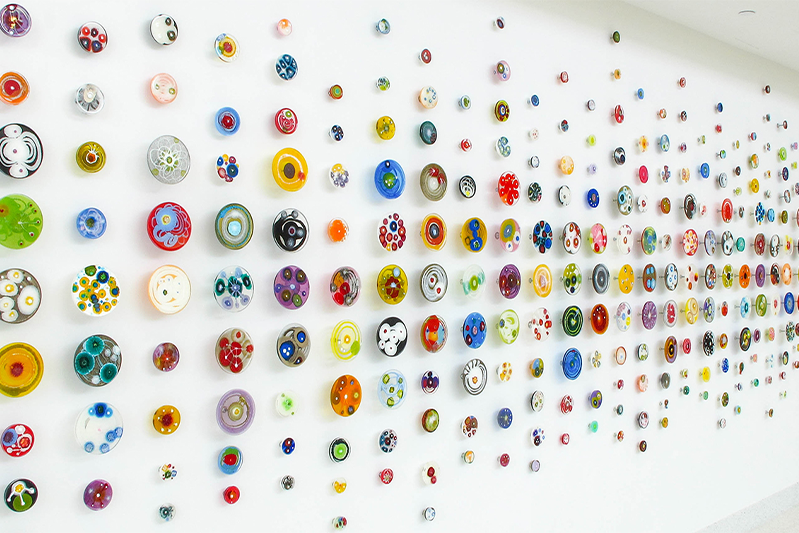
Kathy Triplett: Ontogeny Recapitulates Phylogeny
Inspired by the idea of a single cell and how it progresses to a complex organism, this work is comprised of 84 tiles that are 10 inches square spanning the length of a 60-foot curved wall outside the large auditorium in Hardin Hall. The work explores significant events and various academic programs unique to the history of Clemson University. Artist Website: kathytriplett.com
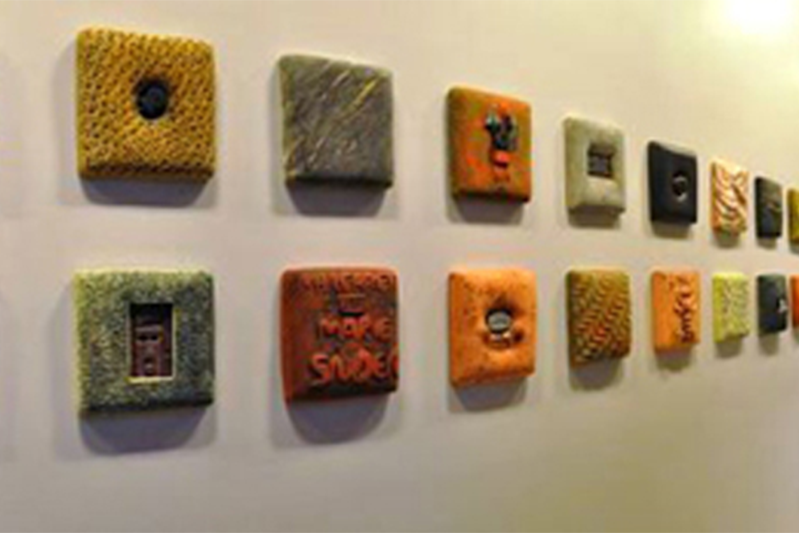
John Acorn: Friday Fliers
Six 8-foot long aluminum “paper airplane” forms placed throughout the campus. With the happenstance of placement guiding the concept, this work dovetails the curiosity and enthusiasm contained within childhood development with the individual pursuit of knowledge found within higher education. The airplane is an icon for the potential of what can be explored if curiosity and enthusiasm are maintained.
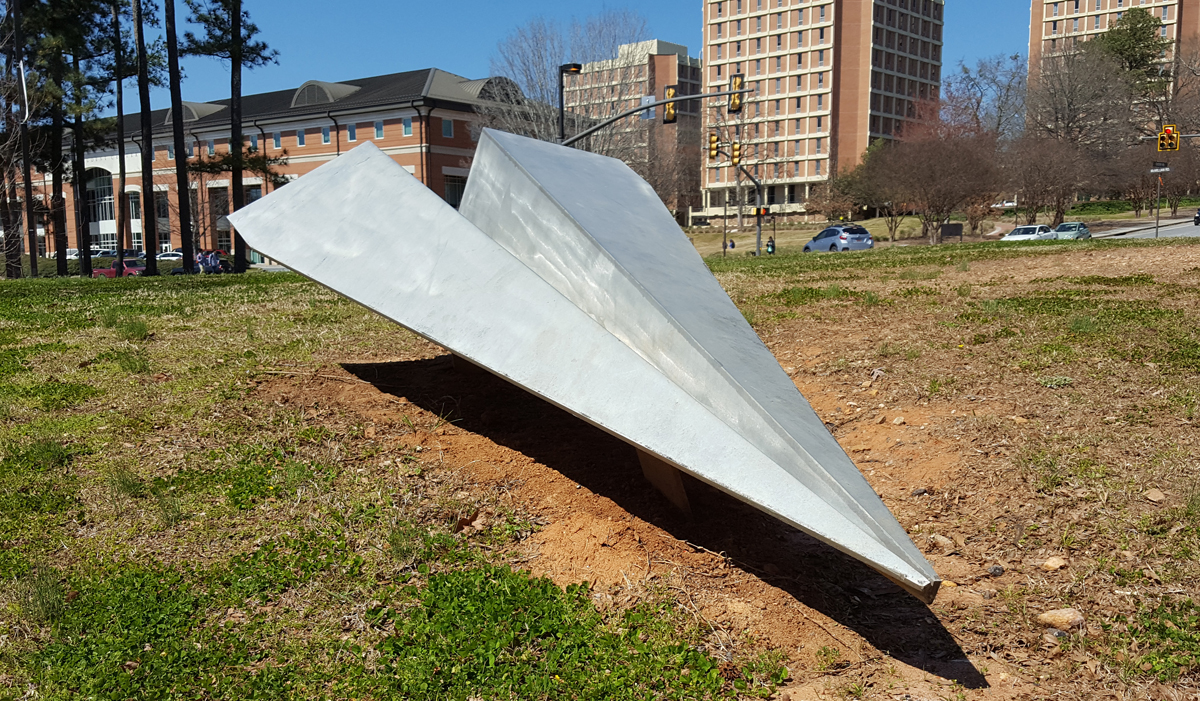
Phil Moody: Three Ages of Man
This work is composed of photos and text, which are meant to explore the three ages of humanity. Contained within the installation—which compromises all three landings of a stairwell in Old Main are 35 images which vary in scale and include a variety of color and black and white photographs that go from childhood to adulthood and then to self reflection of the first stage’s impact on the adult stage.
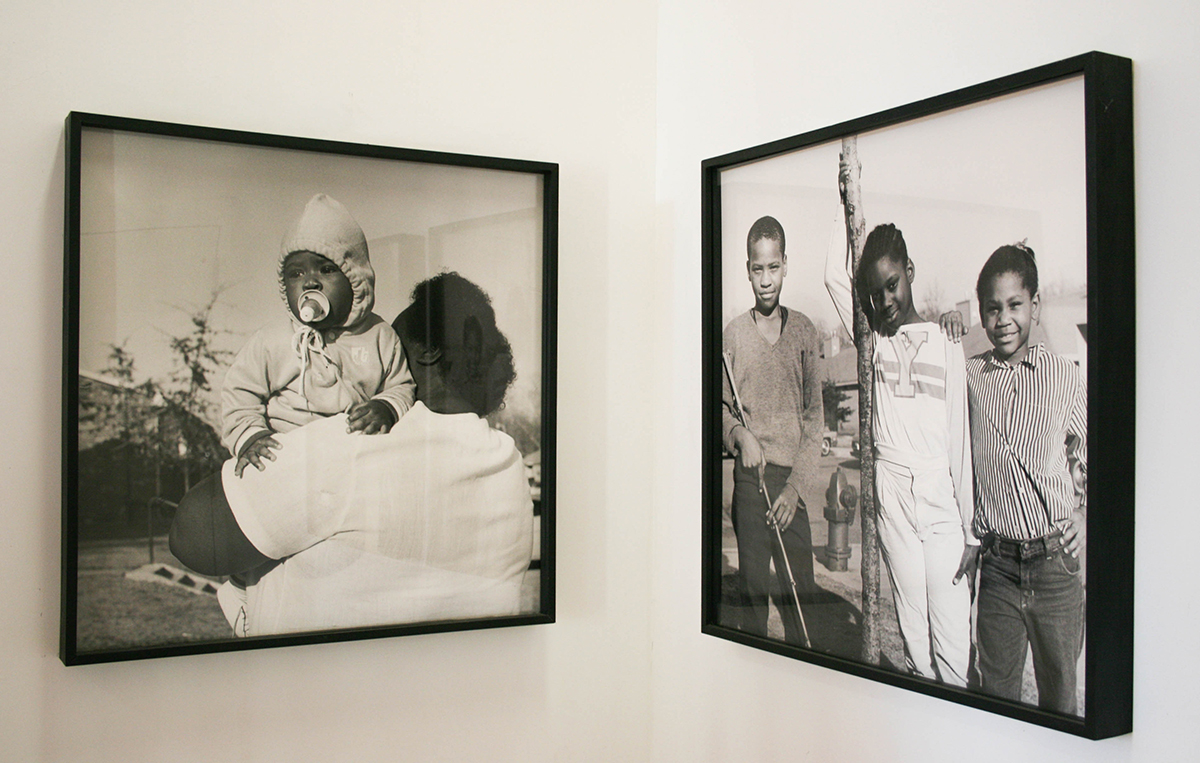
Bruno Civitico: The Performing Arts, Music, Dance, Drama
Three 9 x 9 feet panels, each representing a component of the performing arts on display in the Brooks Center for Performing Arts. Subjects include dance, music, and theater.
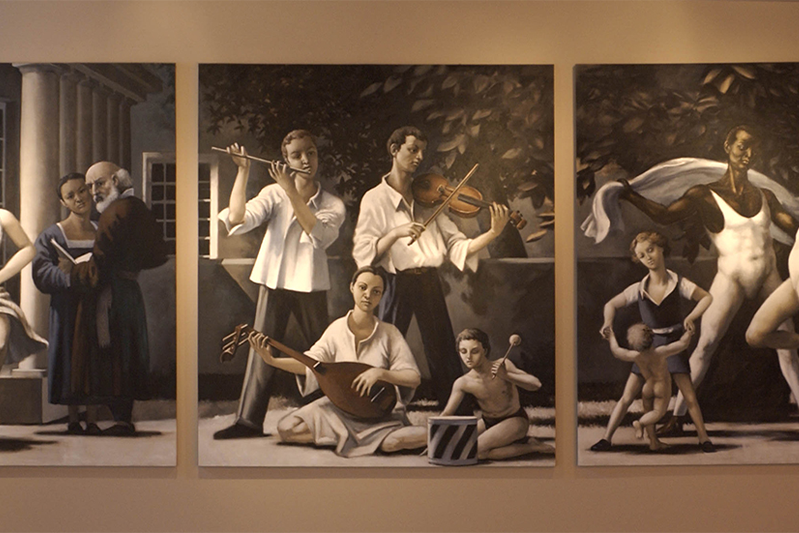
Joey Manson: Shift-Ascend
Located outside of Sirrine Hall across from the Fernow Cafe, "Shift-Ascend" is an abstract painted steel sculpture that fluctuates between figures in motion and a microscope and is situated at a busy pedestrian walkway. Artist Website: joeymanson.com
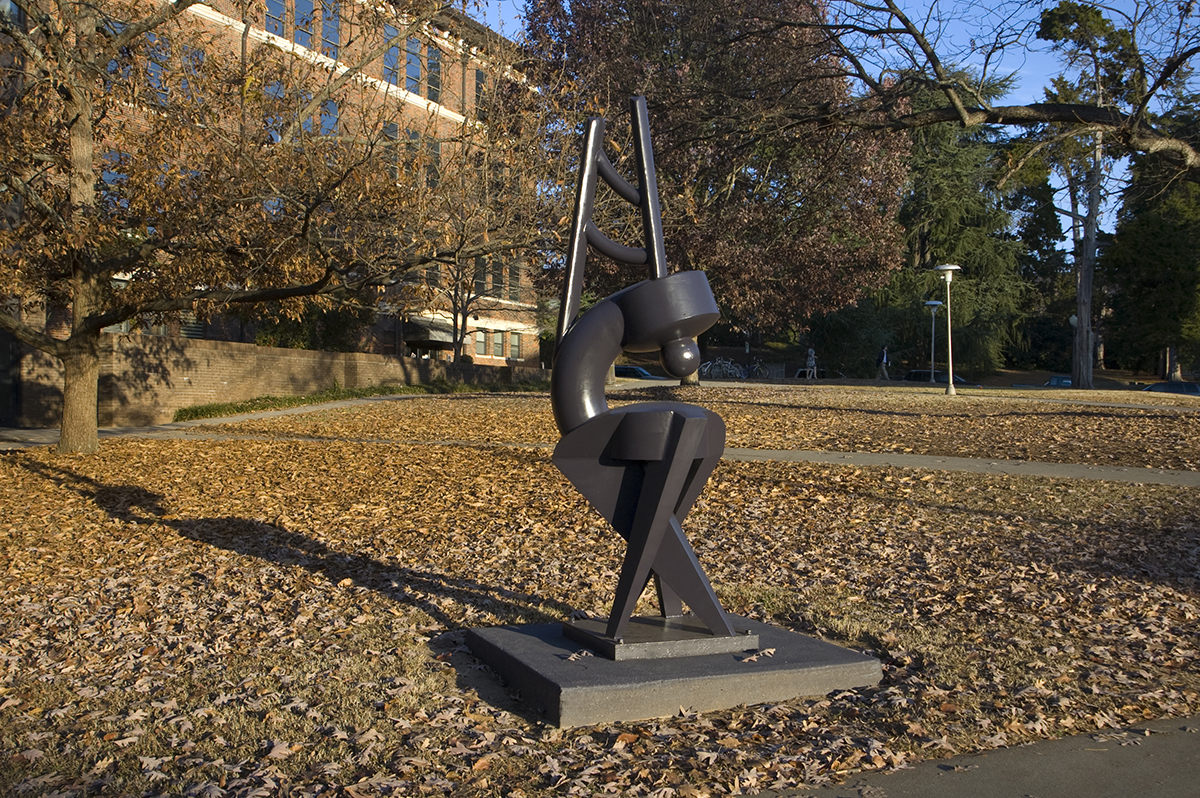
Joe Walters: Spiral Mesh
"The literal content of my work has to do in part with the interdependency of species within ecosystems. I use intentional scale discrepancies to reinforce this idea. Large mammals are given no more physical prominence than insects or other small creatures. The surface treatment of the individual mixed media figures implies they are corroded iron. This creates a Pompeii-like archaeological context for the work and may metaphorically reference the fragility and fleetingness of life, which includes not only individual organisms, but ecological systems as a whole."
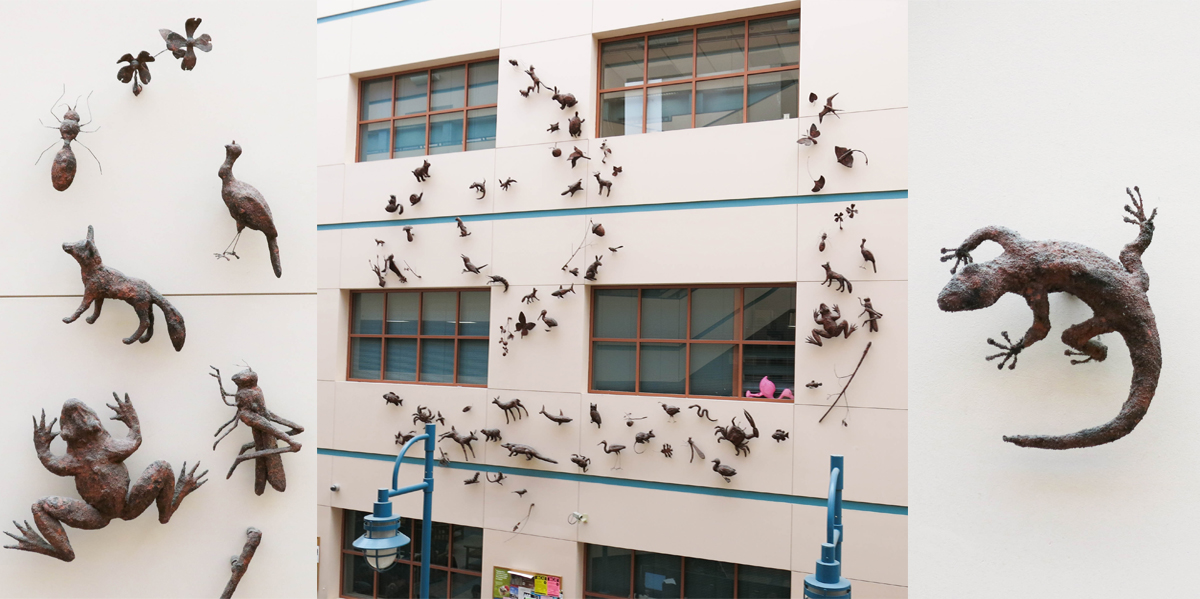
Linda Howard: Six Degrees of Freedom
Completed in the summer of 1995, Linda Howard's sculpture “Six Degrees of Freedom” inherits many characteristics of a long modern art tradition of metal constructions, but in her hands the potentially cool, mechanical and intellectual nature of the work is transformed into energy and movement. Howard has said of her work: "The archways are gateways to transitional spaces, moving one, step-by-step, from a personalized human scale to a larger space, and then on conceptually to the expanded universe beyond."
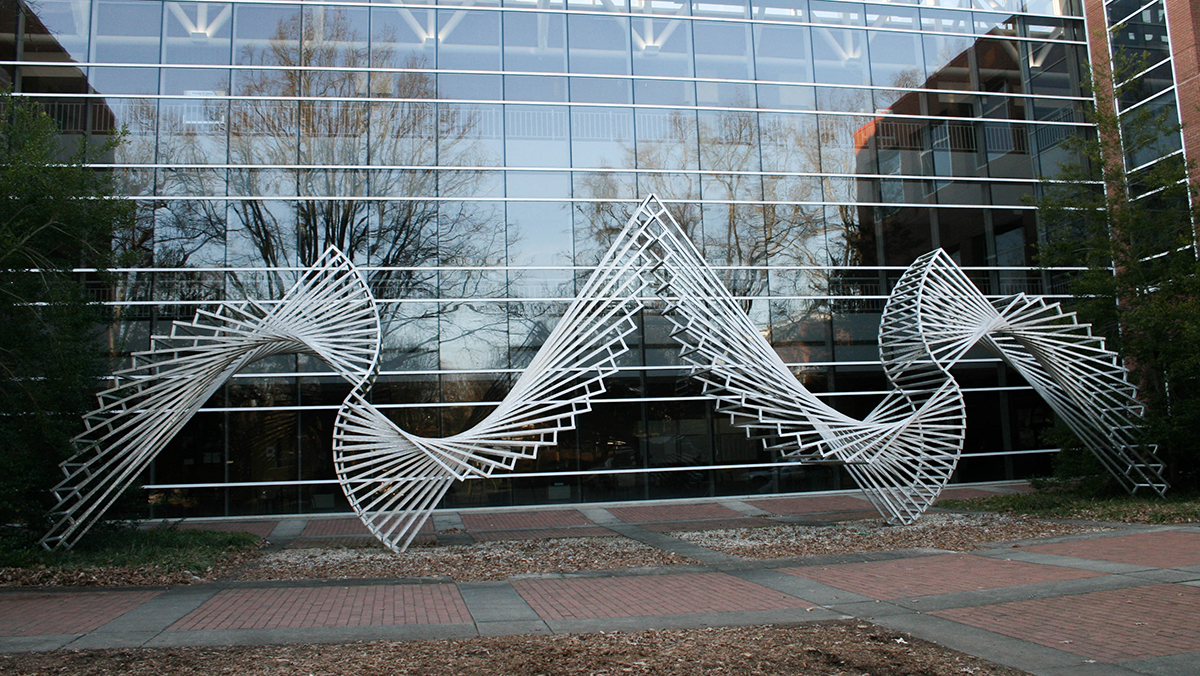
David Tillinghast: P211.t45
This work is a 21-foot high silo form constructed of brick and steel. Inside is a bronze marker with a call number, which corresponds with an artist book housed in the reference section of Cooper Library. The book contains rich black and white images of field grasses in a variety of compositions and is a beautiful companion to the silo form.
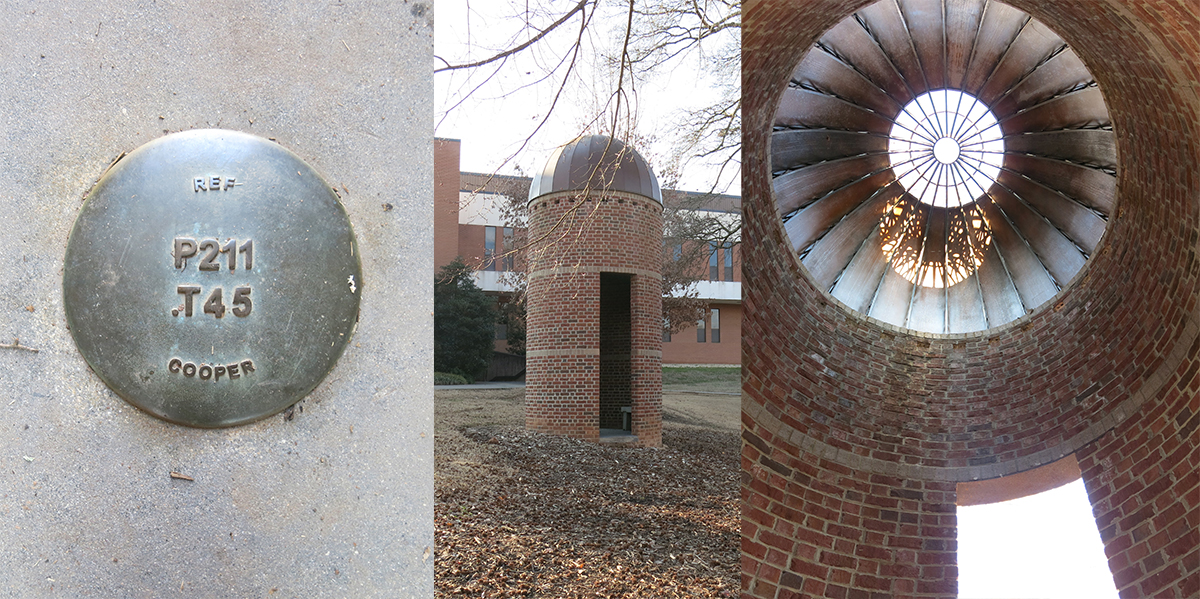
P211.T45
The Secret Book
On the grounds of Clemson's campus, there is a room with no doors or windows. And yet, it guards one of the most well-kept yet well-known traditions. With an inscription of a number on its floor, it leads to a memory that many would like to be a part of before they graduate. If you're curious and clever enough, you could use that number to find a certain secret book in our very own (non-secret) Cooper Library!
During Fall 2020 and Spring 2021 semesters, Clemson Public Art offered a virtual secret book experience in light of the pandemic. The video provides an insight as to how students signed the virtual edition of the secret book during the pandemic.
Students can ask to view the Secret Book at the library front desk now.

David Tillinghast’s brick and steel silo was meant as a connection to agriculture and literature, in which the contents of the book reflect this imagery. The book was made as a companion piece to the silo, and in actuality was never meant to become what it is today! For years, seniors have scoured Cooper Library for this special book in order to put their signatures and well-meaning messages for students to come in the future. Being a part of this small legacy is one of the many ways one can make a mark on campus. While the pandemic means social distancing on campus, this edition of the secret book will be virtual. This will be our very own unique way to commemorate this special legacy, and we would like to thank those of you that participated.
Here's an article written on the Secret Book in Glimpse a Clemson University site on research and creative discovery.

